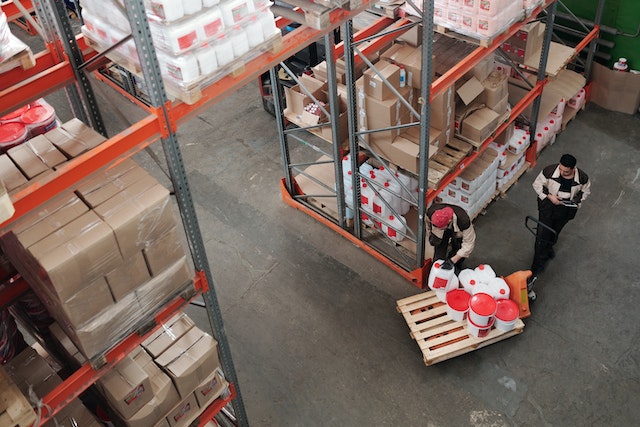Understanding the costs associated with various aspects and operations within your business is crucial for evaluating the viability of your business model. Among the myriad processes in any business, today, we’ll hone in on the expenses related to finding the most suitable pallet wrapping material, a significant consideration for logistics, warehousing, and transportation enterprises.

Pallet wrapping plays a pivotal role in maintaining the safety and security of transported or stored goods.
Securing your cargo with pallet wrap not only enhances the efficiency of pallet movement but also facilitates easier packing alongside other pallets and items. Moreover, it aligns with OSHA’s safety management protocols. Determining the cost of pallet wrapping involves numerous variables, and we’ll explore various approaches to calculating these expenses.
A Simple Starting Point:
One straightforward method to estimate pallet wrapping costs begins with a basic experiment. You need to ascertain the cost of the stretch wrap you utilize, which involves knowing the roll’s weight and cost. Next, manually wrap a pallet with stretch wrap, ensuring it’s fully secured. Subsequently, remove the wrap and weigh it. This allows you to calculate the cost of the wrap used per gram. It’s essential to note that this method provides a very rudimentary cost estimate.
However, this experiment overlooks factors such as the time required to complete the task and the actual cost of the worker performing the job. To account for these variables, you can determine the hourly cost of an employee and time the pallet wrapping process. Calculate the labor cost per minute, measure the time taken to wrap the pallet, and then combine the labor cost with the materials cost to arrive at a more comprehensive estimate.
While this simplified estimate offers a rough idea of your expenses, it may overstate costs due to unaccounted-for variables and potential efficiencies. As we delve further, you’ll discover additional factors that influence pallet wrapping costs.
Factors Impacting the Cost of Pallet Wrapping:
If you aim to ascertain the actual costs of pallet wrapping within your business or seek methods to enhance efficiency, consider the following influential factors:
Hand Wrapping vs. Machine Wrapping: Generally, manually wrapping pallets is more expensive than employing a pallet wrapping machine, except in cases involving minimal pallet wrapping. Investing in a machine becomes more beneficial as it not only speeds up the process but also reduces workplace accidents and injuries. Many machines come with a pre-stretch feature, minimizing stretch wrap usage. Additionally, they can prevent wrap breakage, further enhancing efficiency and cost savings.
Type of Stretch Wrap: Stretch wrap is available in various gauges and strengths, each with different costs and stretching capabilities. It’s crucial to choose the right gauge based on your wrapping method, machinery, and the characteristics of the materials and pallets involved. Switching to a lower gauge wrap, if suitable, can lead to cost reduction.
Pallet Characteristics: The nature of the pallets you regularly wrap, especially irregularly shaped or oversized ones, can significantly impact your cost calculations. It’s advisable to determine the cost of wrapping such atypical pallets and factor this into your cost estimates based on the average number of such pallets wrapped per week or month. This approach can also be applied to calculate return on investments for financial performance analysis, as these unique pallets often require more stretch wrap.
For those seeking to optimize their pallet wrapping processes, consider reaching out to experts in logistics and warehousing packaging like Melbourne Packaging Supplies. They offer a range of packaging materials, machinery, and tools to help streamline your business operations. Melbourne Packaging Supplies provides nationwide shipping from their base in Melbourne, Australia.